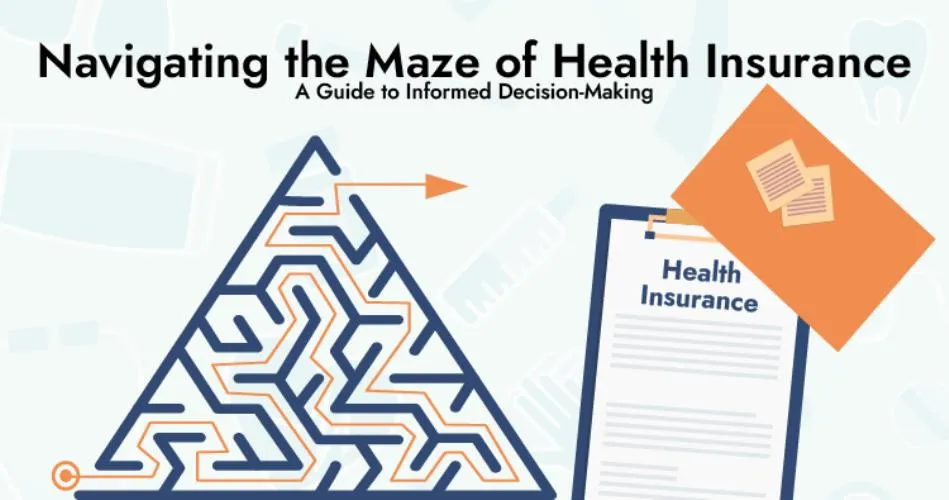In the intricate realm of healthcare, understanding the nuances of health insurance policies is essential for making informed decisions about one’s well-being. Navigating the maze of policy jargon can be a daunting task, but it is a crucial step towards securing the right coverage.
As we delve into the complexities of health insurance, this guide aims to shed light on the terminology, plan types, and considerations that often perplex consumers. By deciphering the intricacies of policy language, individuals can empower themselves to make choices that align with their healthcare needs and financial circumstances. Join us on a journey to demystify the world of health insurance and equip yourself with the knowledge needed to navigate this complex landscape.
Decoding Health Insurance Terminology
Within the intricate tapestry of health insurance, a myriad of terms and concepts awaits comprehension. To embark on this journey of understanding, we must unravel the intricacies that often shroud essential aspects of coverage. At the forefront, we encounter terms such as premiums, deductibles, copayments, coinsurance, and the out-of-pocket maximum – each playing a distinctive role in shaping the financial landscape of healthcare.
Premiums, the recurring fees paid for insurance coverage, serve as the gateway to access. Deductibles, the initial out-of-pocket expenses, precede the full activation of coverage. Copayments, the fixed fees for specific services, and coinsurance, the percentage cost shared with the insurer, add layers of complexity to financial responsibilities. The out-of-pocket maximum, a critical limit, marks the culmination of personal financial obligations for covered services.
Types of Health Insurance Plans
Within the realm of health insurance, a diverse array of plans awaits exploration, each presenting a unique approach to coverage. The Health Maintenance Organization (HMO) operates on a structured network of healthcare providers, emphasizing primary care physicians as gatekeepers to specialized services.
In contrast, the Preferred Provider Organization (PPO) offers flexibility by allowing beneficiaries to seek care both within and outside the designated network. The Exclusive Provider Organization (EPO) strikes a balance, limiting coverage to in-network providers but omitting the need for referrals.
The Point of Service (POS) plan combines elements of HMO and PPO models, providing comprehensive coverage within the network while permitting out-of-network services with a referral. Meanwhile, the High Deductible Health Plan (HDHP) coupled with a Health Savings Account (HSA) introduces a unique savings approach, allowing individuals to set aside funds for qualified medical expenses.
Special Considerations and Exclusions
Amidst the labyrinth of health insurance intricacies, it becomes imperative to delve into the realm of special considerations and exclusions. These are the contours that define the boundaries of coverage, offering insights into what is included and, equally crucial, what lies beyond the scope.
Within this landscape, coverage limitations and exclusions emerge as guiding principles. Cosmetic procedures, often excluded, draw a line between elective enhancements and essential medical interventions. Experimental treatments, an evolving frontier of medical science, may find themselves outside the umbrella of coverage, demanding scrutiny in moments of medical uncertainty.
An exploration of alternative therapies also unveils a spectrum of coverage considerations. While conventional treatments stand firmly within the purview, unconventional methods may require additional scrutiny.
Tips for Comparing and Choosing Health Insurance
In the dynamic landscape of health insurance, the task of selecting the right coverage demands careful consideration and strategic decision-making. Understanding that the intricacies of each policy can be overwhelming, individuals are encouraged to embark on a journey of self-assessment to align their health needs with the available options.
Begin by evaluating personal healthcare requirements. Consider the frequency of medical visits, the importance of prescription drug coverage, and the accessibility of specialist services. This self-awareness forms the foundation for a tailored approach to insurance selection.
Beyond personal health needs, the financial aspect looms large. Scrutinize the total cost of coverage, weighing premiums against potential out-of-pocket expenses. Consideration should extend to employer-sponsored options, as workplace plans may offer a blend of coverage and affordability.
Seeking Clarification and Assistance
Amidst the complexities of health insurance, a crucial aspect of navigating the intricacies lies in seeking clarification and assistance. Engaging with insurance representatives becomes a pivotal step in unraveling the layers of policy details and ensuring a comprehensive understanding.
Understanding the channels through which assistance can be sought is paramount. Whether through customer service hotlines, online chat services, or in-person consultations, these avenues serve as lifelines for individuals seeking clarity. Each communication channel holds the potential to illuminate policy nuances and address specific queries.
As individuals embark on this journey, it is essential to articulate questions with precision. Seek clarification on ambiguous terms, understand the nuances of coverage limits, and explore the specifics of preauthorization and referral requirements. By delving into the details, individuals can extract valuable insights that inform their decision-making process.
Staying Informed and Reviewing Policy Updates
In the ever-evolving landscape of health insurance, the journey doesn’t conclude with the selection of a policy; instead, it necessitates an ongoing commitment to staying informed. Regularly reviewing policy documents and staying attuned to updates becomes a cornerstone of responsible healthcare management.
Policyholders are encouraged to view their insurance relationship as a dynamic partnership. As healthcare landscapes shift and insurance providers adapt, being cognizant of these changes ensures that individuals remain aligned with the most current offerings and coverage provisions.
Delve into policy documents with a discerning eye, scrutinizing the terms and conditions that dictate coverage. Pay attention to any amendments or updates issued by the insurance provider, as these can have profound implications on benefits, limitations, and out-of-pocket responsibilities.
Conclusion
In navigating the intricate maze of health insurance, this journey emerges as a dynamic quest for understanding, empowerment, and informed decision-making. The complexities of policy jargon, diverse plan types, and nuanced considerations may initially seem overwhelming, yet they offer a landscape rich with possibilities for tailored healthcare solutions.
